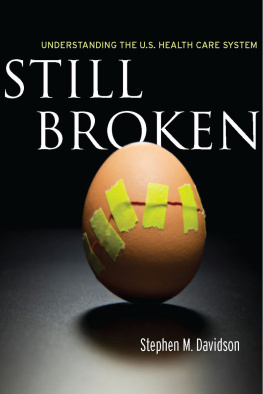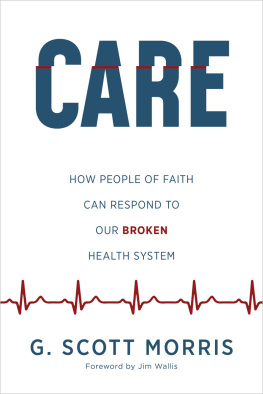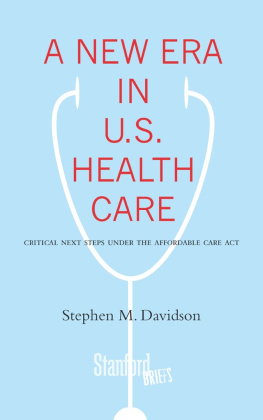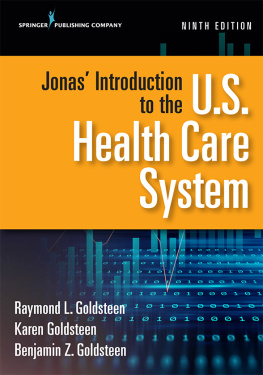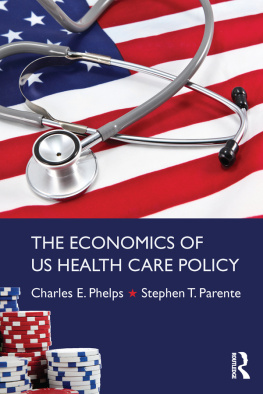Some look at things that are and ask, Why?
I dream of things that never were, and ask why not?
George Bernard Shaw, quoted by Robert F. Kennedy
I still have faith in the American people to do the right thing.
Theodore Sorensen, Counselor: A Life at the Edge of History
Stanford University Press
Stanford, California
2010 by the Board of Trustees of the Leland Stanford Junior University. All rights reserved.
No part of this book may be reproduced or transmitted in any form or by any means, electronic or mechanical, including photocopying and recording, or in any information storage or retrieval system without the prior written permission of Stanford University Press.
Special discounts for bulk quantities of Stanford Business Books are available to corporations, professional associations, and other organizations. For details and discount information, contact the special sales department of Stanford University Press. Tel: (650) 736-1782, Fax: (650) 736-1784
Printed in the United States of Americaon acid-free, archival-quality paper
Library of Congress Cataloging-in-Publication Data
Davidson, Stephen M.
Still broken : understanding the U.S. health care system / Stephen M. Davidson.
p. cm.
Includes bibliographical references and index.
ISBN 978-0-8047-6196-3 (cloth : alk. paper)
ISBN 978-0-8047-7134-4 (digital)
1. Health care reformUnited States. 2. Medical policyUnited States. I. Title. [DNLM: 1. Health Care ReformUnited States. 2. Health ExpendituresUnited States. 3. Health Services AccessibilityeconomicsUnited States. 4. Health Services Needs and DemandeconomicsUnited States. 5. Quality Assurance, Health CareeconomicsUnited States. WA 540 AA1 D253s 2010]
RA395.A3D385 2010
362.10425dc22
To the memory of Nachman Davidson and Odin W. Anderson,the two men who introduced me to the mysteries of the health care system
and
For Noah, Aaron, Tess, Hannah, and Eli, in the hope that the health care system of the future will serve them well
Preface
For years, observers have described the U.S. health care system as broken. Yet, as I write, it appears thatagainst the oddsthe Congress may actually pass reform legislation. With a century of failed attempts behind us, that would be a remarkable accomplishment for President Barack Obama and his congressional allies.
This book is for people who want to understand why the health care system is so important for us, how it really works, what caused the problems that have persisted for decades (and will continue under a new law), how we can solve them, and why we have failed to surmount these problems in the past. It will describe six elements that are critical to a successful reform plan and how various compromises with those elements can affect what a new law will produce. It will also help the reader understand what to expect from the governments new policy and what will need to wait for another time.
The bill that is most likely to pass will make progress toward achieving some reform goals. It will require that almost everyone have insurance, create an insurance market for those without employer-based coverage, establish minimum standards for coverage, and subsidize those who cannot afford available policies. Yet it will leave much undone. For example,
- Millions of Americans still will not have coverage, even though every other developed country covers all its citizens for less than we spend. Despite the new laws subsidies, insurance will still cost too much for many people to afford, most of whom will not qualify for Medicaid.
- Even with insurance, many will have to pay so much out of pocket that they will delay care until they are so sick that the services they need then will keep them in debt for years. At least one bill in the Congress will require insurers to pay only 65 percent of the cost, leaving a whopping 35 percent for the patient and creating a new generation of under insured Americans.
- Covering more people will increase total spending unless the incentives for providers that have propelled excess utilization, and therefore unnecessary spending, also change. Because the likely new law keeps the same provider incentives in place, we can expect to continue to spend more on health care than other countriesby a wide margin.
- Similarly, the new law will do little to stimulate changes in the delivery of services to increase the quality and safety of care, or to reverse the deterioration of the delivery system caused by decades of failure to solve truly key problems.
In sum, millions of Americans will still have access problems and, as a nation, we will still pay too much and get too little from a system that will continue to get worsebecause it will not have incentives for people to make it better.
While this book is not intended as a critique of the new legislation, it will help readers understand the new law and draw their own conclusions. This book will also assist policymakers. For them, the final four chapters of the book will be particularly important. On the basis of the data and analysis that come before it, Chapter 8 details six elements that any plan must include to truly solve the systems problems. Chapter 9 reminds us how we reached this legislative point in time by offering a brief history of reform, starting with Theodore Roosevelts Progressive Party platform of 1912. Chapter 10 sets out components of a political strategy to enact the six reform elements from Chapter 8 and identifies obstacles that stymied previous administrations and will need to be overcome by any administrationpresent or futurethat wants to pass reforms. Finally, since any substantial proposal requires compromises to become law, Chapter 11 assesses the probable effects that various possible compromises would have on those six elements. Policymakers will need to pay particular attention to these concessions when efforts to perfect the new policies begin.
The writing of this book began in late 2007, and continued into 2009, during the most active and promising reform episode since passage of Medicare in 1965. Having labored hard for so many months to enact these changes, however, it is likely that neither the Congress nor the president will want to return to these issues soon. Even if this is all we will get for now, this book will help the reader to assess how far we have come and how much remains to be done. And the next time these matters come to the forewhether in the coming months or yearsthis book will help policy analysts and public officials to take us even closer to our ultimate objective: a health care system worthy of the worlds oldest, most prosperous democracy.
Stephen M. Davidson
Acknowledgments
Even though much of the research I have done on the health care system over the years has had implications for public policy, I have generally resisted the temptation to take a position on controversial policy questions. The reason is that I wanted my research to be taken on its own merits. Did I address an important question? Were the data relevant and the samples representative? Was the analysis appropriate? Were the conclusions supported by the study design and the data? I was afraid that if I took a stand on a difficult policy question, those who had different views would tend to dismiss the research. In fact, I had seen that happen with friends in other fields who became identified with a particular policy position and whose research came to be viewed, rightly or wrongly, as an extension of their views on those issues.
This book represents a departure from that stance. To write it, I broke my informal rule for two main reasons: first, the challenges to the health care system have reached what I believe to be a critical point, and the need for substantial reform is urgent. When I started in the field, I recall my professor, Odin Anderson, remarking that the medical care field was one of the most stable sectors in the American economy. Although major scientific and clinical breakthroughs had occurred over the years and been incorporated into standard care, the way medicine was organized and practiced had not changed much in many decades. The past forty years stand in dramatic contrast to that picture of relatively gentle evolution. Following the passage of Medicare and Medicaid in the mid-1960s, we have triedand often rejecteda dizzying array of new ways of organizing and paying for care. We tried to expand the concept of managed care (an old idea that previously had affected only a few), we tried to stimulate price competition among insurers and providers, and we changed the incentives hospitals face by paying them on the basis of their patients characteristics (using Diagnosis Related Groups, DRGs) instead of on the charges for the individual services they delivered. In the end, none of these experiments produced more accessible, more reliable, or more efficient care or slowed the trajectory that has brought us to our present unsatisfactory state.

